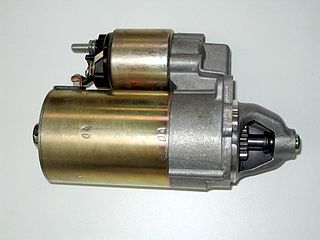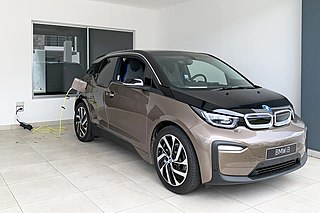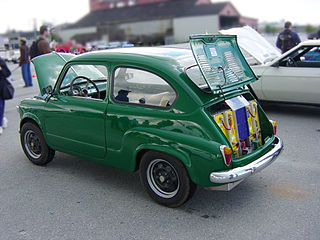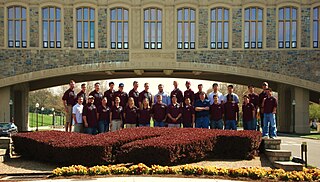Related Research Articles

An auxiliary power unit (APU), is a device on a vehicle that provides energy for functions other than propulsion. They are commonly found on large aircraft and naval ships as well as some large land vehicles. Aircraft APUs generally produce 115 V AC voltage at 400 Hz (rather than 50/60 Hz in mains supply), to run the electrical systems of the aircraft; others can produce 28 V DC voltage. APUs can provide power through single or three-phase systems. A jet fuel starter (JFS) is a similar device to an APU but directly linked to the main engine and started by an onboard compressed air bottle.

In electricity generation, a generator is a device that converts motion-based power or fuel-based power into electric power for use in an external circuit. Sources of mechanical energy include steam turbines, gas turbines, water turbines, internal combustion engines, wind turbines and even hand cranks. The first electromagnetic generator, the Faraday disk, was invented in 1831 by British scientist Michael Faraday. Generators provide nearly all the power for electrical grids.

A starter is a device used to rotate (crank) an internal-combustion engine so as to initiate the engine's operation under its own power. Starters can be electric, pneumatic, or hydraulic. The starter can also be another internal-combustion engine in the case, for instance, of very large engines, or diesel engines in agricultural or excavation applications.

An electric vehicle (EV) is a vehicle whose propulsion is powered fully or mostly by electricity. EVs include road and rail vehicles, electric boats and underwater vessels, electric aircraft and electric spacecraft.

The tZero is a hand-built electric sports car designed and built in very limited numbers by the U.S. pioneering company AC Propulsion in the mid 1990's. It was the inspiration and direct predecessor of the Tesla line of electric cars. The only part of the tZero that was not proprietary was the body that was based on the Piontek Sportech sports car, yet many parts of the body and interior were extensively modified. It consists of a Kevlar & Carbon Fiber reinforced body built over a custom hand-built reinforced stainless steel fabricated to package batteries space frame with double wishbone independent suspension and rack and pinion steering. AC Propulsion utilized their AC-150 drivetrain, a single-speed electric system with an overall gear ratio of 9:1.

A caravan, travel trailer, camper, tourer or camper trailer is a trailer towed behind a road vehicle to provide a place to sleep which is more comfortable and protected than a tent. It provides the means for people to have their own home on a journey or a vacation, without relying on a motel or hotel, and enables them to stay in places where none is available. However, in some countries campers are restricted to designated sites for which fees are payable.

A campervan, also referred to as a camper, caravanette, motorhome or RV in North America, is a self-propelled vehicle that provides both transport and sleeping accommodation. The term describes vans that have been fitted out, whereas a motorhome is one with a coachbuilt body.

A diesel–electric transmission, or diesel–electric powertrain, is a transmission system powered by diesel engines for vehicles in road, rail, and marine transport. Diesel–electric transmission is similar to petrol–electric transmission, which is powered by petrol engines.

An exhaust system is used to guide reaction exhaust gases away from a controlled combustion inside an engine or stove. The entire system conveys burnt gases from the engine and includes one or more exhaust pipes. Depending on the overall system design, the exhaust gas may flow through one or more of the following:

In automobile engineering, electric vehicle conversion is the replacement of a car's combustion engine and connected components with an electric motor and batteries, to create a battery electric vehicle (BEV).

In rail transport, head-end power (HEP), also known as electric train supply (ETS), is the electrical power distribution system on a passenger train. The power source, usually a locomotive at the front or 'head' of a train, provides the electricity used for heating, lighting, electrical and other 'hotel' needs. The maritime equivalent is hotel electric power. A successful attempt by the London, Brighton and South Coast Railway in October 1881 to light the passenger cars on the London to Brighton route heralded the beginning of using electricity to light trains in the world.
Shore power or shore supply is the provision of shoreside electrical power to a ship at berth while its main and auxiliary engines are shut down. While the term denotes shore as opposed to off-shore, it is sometimes applied to aircraft or land-based vehicles, which may plug into grid power when parked for idle reduction.
Hybrid vehicle drivetrains transmit power to the driving wheels for hybrid vehicles. A hybrid vehicle has multiple forms of motive power, and can come in many configurations. For example, a hybrid may receive its energy by burning gasoline, but switch between an electric motor and a combustion engine.

The Hokie Electric Vehicle Team of Virginia Tech, better known as HEVT, is a nationally recognized undergraduate student design team in the Department of Mechanical Engineering at Virginia Tech. HEVT was formed in 1994 to compete in the 1995 Hybrid Electric Vehicle (HEV) Challenge, one of the many competitions organized by the Argonne National Laboratory through the United States Department of Energy. HEVT has been involved in the Department of Energy Advanced Vehicle Technology Competitions (AVTCs) ever since. HEVT attributes a significant amount of its success to their Advisor, Professor Doug Nelson in Mechanical Engineering. Dr. Nelson has received the Outstanding Faculty Advisor award at competition 3 times. He has greatly aided the education of students at Virginia Tech and helped the team succeed at competition The overall highlights of past competitions are as follows:

The Toyota FCHV is a hybrid hydrogen fuel cell vehicle development programme of the Toyota Motor Corporation, which was leased to a limited number of drivers in the United States and Japan beginning in 2002. The Toyota FCHV and Honda FCX, which began leasing on 2 December 2002, became the world's first government-certified commercial hydrogen fuel cell vehicles. Its first commercial fuel cell vehicle was developed from the FCHV-4, which was adapted from the Toyota Highlander body. "FCHV" stands for "Fuel Cell Hybrid Vehicle". A number of prototypes have been produced, up to the latest FCHV-adv ("advanced").

A charging station, also known as a charge point, chargepoint, or electric vehicle supply equipment (EVSE), is a power supply device that supplies electrical power for recharging plug-in electric vehicles.

The Class-B Standardized Military Truck or "Liberty Truck" was a heavy-duty truck produced by the United States Army during World War I. It was designed by the Quartermaster Corps with help from the Society of Automotive Engineers in 1917 in an effort to help standardize the immense parts catalogue and multiple types of vehicles then in use by the US military, as well as create a truck which possessed all the best features of heavy truck technology then available. It was the first official standardized motor vehicle adopted and produced by the US Military.

Fitted For Wireless (FFW) and Fitted For Radio (FFR) were British Army designators for vehicles equipped to carry radio equipment. Although many of these vehicles were dedicated 'radio vans' and had complex and expensive radio sets installed, the intention was also that general purpose vehicles could be issued in 'FFW' state with the low-cost but time-consuming cabling and equipment mounts already prepared. The actual sets themselves could be installed later, if a new radio vehicle was required owing to damage or breakdown.
Petrol–electric transmission or gasoline–electric transmission or gas–electric transmission is a transmission system for vehicles powered by petrol engines. Petrol–electric transmission was used for a variety of applications in road, rail, and marine transport, in the early 20th century. After World War I, it was largely superseded by diesel–electric transmission, a similar transmission system used for diesel engines; but petrol–electric has become popular again in modern hybrid electric vehicles.
The term recreational vehicle (RV) is often used as a broad category of motor vehicles and trailers which include living quarters for designed temporary accommodation. Types of RVs include motorhomes, campervans, caravans, fifth-wheel trailers, popup campers, truck campers and Park Model RVs.
References
- ↑ "Doonby wraps, producer talks : The Smithville Times". Archived from the original on 2011-07-17. Retrieved 2010-08-08.
- ↑ Beyond the Farthest Star
- ↑ Carried away [usurped]